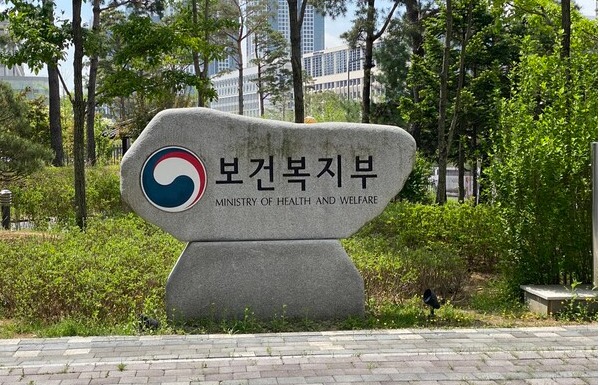
Type 1 diabetes is still misunderstood because of its name. Type 1 is often treated the same way as type 2 diabetes, which is a well-known, chronic disease of older adults. Unsurprisingly, diabetes policies have been created without taking into account the unique characteristics and circumstances of people with type 1 diabetes.
In conclusion, type 1 diabetes has nothing to do with diet, lifestyle, or age. There is no known cause. It is only known as an "autoimmune disease" in which the immune system attacks pancreatic cells to fend off foreign viruses. Because the immune system wipes out the pancreatic cells, people with type 1 diabetes have very weak or no pancreatic function.
That makes blood sugar control much more difficult. Unlike most type 2 diabetes patients with weak pancreatic function, type 1 patients have almost no pancreatic function. It means that when you eat nutrients, it doesn't produce any insulin to turn them into energy. That leads to excess blood sugar, which destroys the patient's blood vessels and organs. The only way to manage this is to inject insulin externally, but even the slightest error in dosage can lead to high or low blood sugar. The rise and fall of blood sugar are much more drastic in younger people due to their growth hormones.
However, there are not many healthcare providers familiar with type 1 diabetes, and the understanding of healthcare policymakers is also low. So when people call for policy solutions, the answer is always the same: "We will continue with the existing (type 2) diabetes management policies."
A case in point was the National Assembly Health and Welfare Committee's Bill Review Subcommittee meeting in March.
Officials and experts who attended the subcommittee to review the so-called "Act on Support for Children, Adolescents, and Young People with Diabetes" (Young Diabetes Act) opposed the enactment of the law, arguing that:
-- Management and support for young people with diabetes, including type 1 diabetes, overlap with the existing legal system.
-- There are equity issues with other chronic diseases.
-- There is no need for separate legislation because the hypertension and diabetes registration project (the so-called high-diabetes project) is in place and will be expanded to all ages.
These allegations were made even though these diseases are not managed at all in the framework of elderly chronic patients.
The Young Diabetes Act prepared and proposed by Rep. Lee Myung-soo of the People Power and the Korea Diabetes Union in 2021, targets young diabetics under the age of 34 specified in the Youth Basic Act and aims to:
-- Establish an education and management system for various intractable diabetes patients.
-- Strengthen coverage expansion.
-- Improve social awareness.
-- Eliminate discrimination against patients.
It aims to provide a more practical and comprehensive approach to care that considers the characteristics and circumstances of young diabetes patients.
However, the bill has not crossed the threshold of the National Assembly and is pending in the Health and Welfare Committee.
Interprofessional coordination and patient education are required
People with type 1 diabetes need to test their blood glucose at least four to 12 times a day, or more often, to determine the amount of insulin needed for each meal and type of food and to have self-injections. People with type 1 diabetes can't control their blood sugar with regular medication, diet, and exercise like type 2 patients. In type 1 diabetes, there are no medications other than insulin.
Blood sugar is easily affected by activity and stress, and sudden changes in blood sugar can cause fainting or, in the worst cases, death due to hypoglycemia. As children experience puberty, they often lose their will to manage it out of rebellion. That explains why parents of children with type 1 diabetes are never at ease.
Ideally, diabetes specialists from various fields, such as nurses, nutritionists, and social workers, should work together to manage the blood sugar of patients with type 1 diabetes. However, Seoul National University Children's Hospital is the only institution in Korea that has such a system in place.
"Diabetes education is not reimbursed, and even with this amount of manpower, we can't operate without external funding or sponsorship. It is a structure that cannot be created in other hospitals,” hospital officials said. “This is why many of the patients with type 1 diabetes treated in this hospital at a young age have not left here as adults.”

No insurance benefits for pregnant diabetics
When the Office of Policy Coordination issued the "Measures to Protect Children with Diabetes in Daycare Centers and Schools" in 2017, patients and medical staff had high hopes. It was unprecedented for the government to issue a customized policy focused on the needs of young diabetics, including those with type 1 diabetes.
While there have been some results, such as developing guidelines for protecting children with diabetes in schools at all levels, the essential guarantee of blood glucose control has remained focused on continuous glucose monitors. Education, the most important aspect of patient management, and establishing a management system through coordination among various professionals, including healthcare providers, social workers, and nutritionists, have not been made.
The problem of pregnant diabetics is even more serious. If diabetes develops in pregnant women due to hormonal abnormalities and is not well managed, it can adversely affect the health of the fetus. However, gestational diabetes is rarely covered by health insurance. Only a few things are covered by health insurance, including test strips for self-measuring blood sugar and syringes for injecting insulin. Through the “2017 Measures to Protect Children with Diabetes in Daycare Centers and Schools,” people with type 1 diabetes benefit from the National Health Insurance Service for continuous glucose monitors and insulin pumps. However, patients with gestational diabetes are not eligible.
It is difficult to expect a pregnant woman to handle invasive blood glucose testing and insulin injections with little knowledge and preparation for diabetes. As a result, many pregnant women cannot manage their blood sugar properly. Once the pregnancy is over, many women's blood sugar levels return to normal immediately, so it's virtually as if it never happened. Tats may explain the lack of policy attention to date. However, the damage that diabetes does to the mother and fetus during the disease can manifest itself at some point.

Government works out measures by recognizing fees for educational counsel
On a hopeful note, the government has announced plans to take proactive measures against type 1 diabetes through the National Assembly.
Although there is still a negative trend in the “Young Diabetes Act” legislation, the Ministry of Health and Welfare is preparing a proposal that includes expanding support for patient education counseling by recognizing the number of counselors and increasing the amount of support for continuous glucose monitors and insulin auto-injectors and will submit it to the Health Insurance Policy Review Committee in the fourth quarter of this year.
Patient organizations welcomed the ministry's concrete measures. Above all, they attach significance to the government's recognition of the importance of managing diseases such as type 1 diabetes through education, counseling, and coordination with various professions beyond just diagnosis and medication. The need to use expensive medical devices for stable blood sugar management was also mentioned.
That raises hopes that young diabetics, including those with type 1 diabetes, will be able to substantially fill in the gaps left unfinished by the 2017 “Pediatric Diabetes Child Protection Plan.” Diabetes professionals, patients, and families have long been waiting for the government to provide practical support for young people with diabetes, and all eyes are now on the government's plan.
With no specific mention of gestational diabetes, it is unclear if it will be included in the plan. Nevertheless, it is hoped this will be the beginning of a change in the direction of policies for young people with diabetes and that it will improve their lives and save their lives. It will be interesting to see what the Ministry of Health and Welfare's plan for young diabetes will look like and when it will appear.

